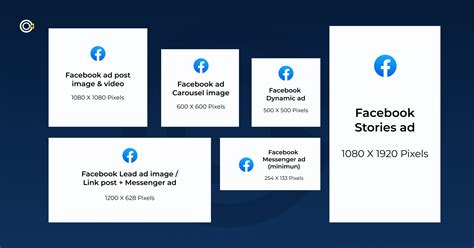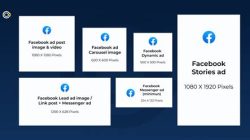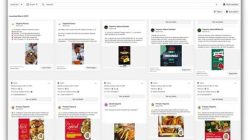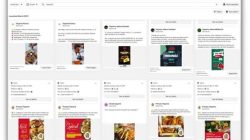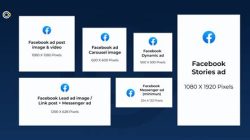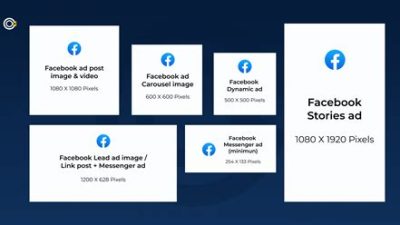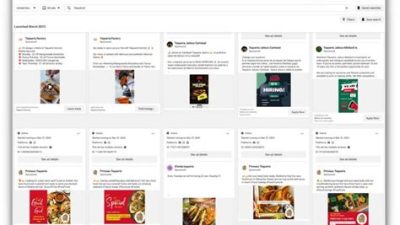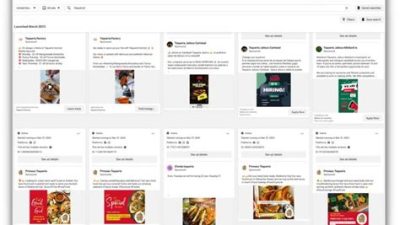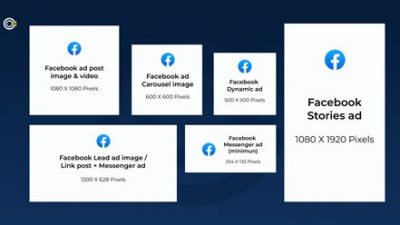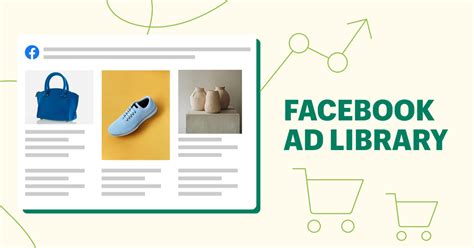
Hey there! If you’ve ever wondered what ads are being run on Facebook and how different brands are targeting their audience, you’re in luck. The Facebook Ad Library is a treasure trove of information that lets you peek behind the curtain at all the advertising going on across the platform. Whether you’re a marketer looking for inspiration or just curious, this tool makes it easier than ever to see what others are doing and stay in the loop. Let’s dive in and explore what makes the Facebook Ad Library so valuable!
What is the Facebook Ad Library?
The Facebook Ad Library is a comprehensive tool provided by Facebook that allows users to see all ads that are currently running on the platform. Whether you’re a marketer looking to analyze competitors, a journalist investigating political ads, or simply a curious individual, the Ad Library is an invaluable resource. Launched in 2019 with a focus on transparency, the Ad Library contains information about ads running across Facebook, Instagram, Messenger, and Audience Network. In essence, it serves as a public repository for ad content. Users can search ads by keyword, page name, or even filter by specific criteria such as ad format or the type of ad (e.g., link ads, video ads). This makes it incredibly user-friendly and accessible to anyone who wants to delve into the world of digital advertising. The information provided in the Ad Library includes detailed insights such as when and where the ad appeared, the demographics of the audience it was targeting, and how much was spent on it. This level of transparency is essential, especially given the increasing scrutiny surrounding social media advertising practices. For businesses, understanding how their competitors are advertising and what kind of messaging resonates with audiences can offer a significant advantage in formulating successful ad strategies.
How to Use the Facebook Ad Library Effectively
Using the Facebook Ad Library effectively can greatly enhance your understanding of advertising trends, competitor strategies, and consumer engagement. Start by navigating to the Ad Library through Facebook’s main site or directly using a search engine. Once there, you can enter a specific brand, product, or keyword to see relevant ads. One of the most useful features is the ability to filter ads by time frame, allowing you to observe how advertising strategies change over weeks or months. Look for patterns, such as seasonal campaigns or responses to current events. Another tip is to pay close attention to ad formats and messaging strategies. Note which ads seem to capture attention and gather engagement. Are they using striking visuals or emotional language? This can help you identify best practices for your own ads. Additionally, the demographic information provided offers insights into who the brand is targeting, helping you think about your own audience. Moreover, don’t just stop at viewing one ad; click on several different ads to gain a comprehensive perspective. By observing the slight variations in messaging and design, you can learn how to tailor your strategies accordingly. So, dive in, explore, and don’t be afraid to analyze what you see! The data is there to help you make informed decisions.
The Importance of Ad Transparency
Ad transparency has become a hot topic in recent years, particularly with growing concerns about misinformation and data privacy. The Facebook Ad Library is a crucial step towards addressing these issues by allowing users to hold advertisers accountable for their claims and practices. As consumers, we have the right to know what products and services are being promoted, especially when it comes to politically charged ads or social issues. The ability to examine who is funding these ads and the messages they propagate adds an additional layer of scrutiny that was previously lacking. For businesses, understanding that their ads exist in a public domain can help foster a sense of responsibility towards ethical advertising practices. By ensuring that your own advertising is transparent, you can build trust with your audience. Transparent ad practices can also enhance brand loyalty, as consumers are increasingly gravitating toward brands that value honesty. Furthermore, transparency is not just beneficial from a consumer perspective; it also enhances the effectiveness of marketing strategies. When brands operate in good faith and are open about their advertising efforts, they are more likely to engage positively with their audience, leading to improved conversion rates. Additionally, understanding the regulatory environment around advertising is essential. Laws and regulations can differ dramatically between countries and regions, and being aware of these can help you avoid potential pitfalls.
Analyzing Competitor Ads
Analyzing competitor ads using the Facebook Ad Library can uncover a wealth of information that can inform your marketing strategies. First and foremost, competitive analysis allows you to identify what others in your niche are doing right. Take note of the types of ads they are running—are they primarily using videos, carousel ads, or lead generation forms? Understanding these trends can help you adjust your marketing mix accordingly to resonate with your target audience. Furthermore, observe the tone and messaging. Are competitors leaning into humor, urgency, or emotional storytelling? These insights can give you creative inspiration for your own campaigns. Don’t just focus on the high-budget brands—there’s often a lot to learn from smaller competitors who may have unique approaches or unconventional ad strategies. Beyond content, you can also analyze the performance of these ads by looking at the engagement metrics shared in the library. While you won’t get detailed performance analytics, metrics such as the number of impressions and engagement will give you a sense of how well the ads are resonating. Break down the elements that lead to success or failure. This comparative analysis is an ongoing process; keep revisiting the Ad Library periodically to track any shifts in advertising direction and stay ahead of the competition.
The Future of the Facebook Ad Library
The future of the Facebook Ad Library appears promising, especially as the demand for ad transparency continues to grow. As more scrutiny is placed on digital advertising, Facebook will likely enhance and expand the Ad Library’s features. This may include more robust analytics tools or additional ways to filter and analyze ads, making it even easier for users to access information. Improved features could also give businesses better opportunities to optimize their ad strategies based on real-time data analysis. Moreover, as regulations around advertising tighten globally, Facebook may take further steps to ensure compliance and provide users with transparent information about ad spend and targeting tactics. Integrations with other platforms utilizing cross-channel advertising may also arise, making it easier to gather comprehensive insights from various platforms. Ideally, this evolution will align with growing consumer expectations for ethical advertising, where transparency and accountability are paramount. The combination of enhanced features along with an increase in regulatory oversight will likely lead to a more carefully curated ad ecosystem on Facebook. As a marketer, keeping ahead of these developments will be essential for effective strategy formulation. The Ad Library’s ongoing evolution will be crucial for both advertisers and consumers, fostering a marketplace that values both innovation and ethical standards.
Understanding the Facebook Ad Library
What is the Facebook Ad Library?
The Facebook Ad Library is an invaluable resource provided by Facebook that allows users to see all ads currently running across Facebook’s platforms, including Instagram. It was launched for the purpose of increasing transparency about advertising on its platforms, particularly concerning political and social issues. This service not only provides a glimpse into what companies are promoting but also offers data on ad performance, targeting, and creative content. By giving everyone access to this information, Facebook aims to hold advertisers accountable while allowing consumers to make informed decisions based on the advertisements they encounter. One of the essential features of the ad library is its search function, which lets users filter ads by various parameters, including keywords, countries, and advertisers. Additionally, it provides information regarding whether an ad is related to social issues, elections, or politics. Therefore, anyone can review the ad spend by different advertisers and even dissect their strategies. It’s like peering behind the curtain of digital marketing, and it can be incredibly useful for competitors looking to gain insights into their rivals’ tactics. Here’s a table highlighting some key features of the Facebook Ad Library:
| Feature | Description |
|---|---|
| Ad Search | Search for ads by keywords, advertisers, and location. |
| Transparency | View the total ad spend and metrics on ad performance. |
| Political Ads | Special section for political and social issue ads with unique disclosures. |
| Creative Insights | Analyze what types of creatives different advertisers are using. |
Why is the Facebook Ad Library Important for Businesses?
The Facebook Ad Library is not just a tool for consumers to monitor ads; it is also an indispensable asset for businesses and marketers. In the competitive landscape of social media advertising, understanding your competition’s advertising strategies can lead to significant advantages. By browsing through the ad library, businesses can gather insights on what types of ads are performing well. They can analyze trends in imagery, copy, and calls to action, allowing them to craft more effective campaigns. This backup of competitive intelligence can streamline the ad creation process and reduce the guesswork involved in what resonates with consumers. Additionally, it allows businesses to monitor their own advertising campaigns, ensuring compliance with Facebook’s ever-evolving advertising policies. Being able to see how similar businesses are advertising can inform budget allocations and audience targeting strategies. Furthermore, marketers can test ideas based on successful ads, leading to experimentation that can elevate ad performance. Essentially, the Facebook Ad Library acts as a real-time research center for advertisers, allowing them to adapt and optimize their campaigns efficiently.
How to Access and Use the Facebook Ad Library
Accessing the Facebook Ad Library is straightforward; just head to the Facebook Ads Library website, and you’ll be greeted with a simple search interface. Enter the name of a brand, political figure, or topic you’re interested in, and hit search. You can filter results based on different criteria, such as location or ad type. Once you find an ad that piques your interest, click on it for further details, including when the ad started running, its destination URL, and any relevant metrics. Navigating through the library is user-friendly, making it accessible for users of all technical levels. You can view not just live ads but also get historical data, which can give context to an ad’s journey and overall effectiveness. Plus, the library is frequently updated, ensuring that the information you’re accessing is current. You can easily switch views between different ad formats and platforms to see how versatility works in the advertising strategy of various brands. It’s important to regularly check the library, as trends and strategies in advertising can shift quickly, and you want your marketing efforts to stay relevant. By taking advantage of this resource, businesses can sustain their competition in the digital marketplace.
Best Practices for Using the Facebook Ad Library
To make the most of the Facebook Ad Library, it’s crucial for marketers and advertisers to implement best practices. First, set clear objectives for what you hope to achieve by using the library and tailor your searches accordingly. Instead of randomly browsing ads, focus on specific brands you admire or that are direct competitors. This targeted approach will yield more relevant insights. Additionally, keep notes on what you find. Take screenshots of effective ads or jot down notes regarding particular strategies that appeal to you. Examine not just what’s successful but also ads that might not be performing well. Understanding both ends of the spectrum can give you a well-rounded view of what to emulate or avoid. Consider utilizing the data gathered for hypothesis testing within your own campaigns. A/B testing based on insights from the ad library can refine your strategies. Finally, remember that the library is not just a static tool; it should be part of an ongoing competitive analysis process. Regularly return to the library to keep abreast of changes in the ad landscape; it can offer fresh ideas and keep your marketing efforts aligned with consumer trends.
Frequently Asked Questions (FAQ)
1. What is the Facebook Ad Library?
The Facebook Ad Library is a searchable database of all ads currently running on Facebook and Instagram, promoting transparency in advertising.
2. How can I access the Facebook Ad Library?
You can access the Facebook Ad Library by visiting their website and using the search function to find ads by keywords, advertisers, or topics.
3. Is the Facebook Ad Library free to use?
Yes, the Facebook Ad Library is completely free to access and use for anyone interested in exploring advertisements.
4. Can I see historical ads in the Facebook Ad Library?
Yes, the ad library provides access to historical ads, enabling users to track ad performance over time.
5. What types of ads can I find in the Facebook Ad Library?
You can find various types of ads, including those related to political and social issues, as well as standard commercial advertising.
6. Can businesses monitor their own ads in the library?
Yes, businesses can see their active ads and analyze performance, which helps in assessing compliance with Facebook’s ad policies.
7. How does the ad library promote transparency?
By allowing users to view ad content, spend, and targeting details, the library ensures that advertisers are held accountable for their strategies.
8. Can I find information on ad performance metrics?
Yes, the Facebook Ad Library provides access to various performance metrics, giving you insights into how effective an ad is.
9. Does the ad library show who is targeting what audience?
The library does not reveal specific audience details but shows the ads that are currently targeted to specific demographics.
10. Can I search for ads from specific advertisers?
Absolutely! You can filter your search results by entering the name of specific advertisers to see all their active ads.
11. How frequently is the Facebook Ad Library updated?
The Facebook Ad Library is updated regularly, ensuring that the information reflects the most current ads being run on their platforms.
12. Are there restrictions on what ads are displayed?
Yes, certain ads, especially those related to sensitive social issues, go through a stricter review process to ensure compliance with Facebook’s advertising guidelines.
13. Can I use the insights from the library for my own campaigns?
Absolutely! Analyzing competitors’ ads can help you refine your own strategies and improve your marketing as you learn from their successes and mistakes.
14. Is the Facebook Ad Library available in all countries?
Yes, the Facebook Ad Library is accessible in most countries, but the availability of some features may vary by locality due to regional laws.
15. Can I report misleading ads found in the library?
Yes, users have the option to report ads that seem misleading or inappropriate, contributing to the community’s overall integrity and trust.
Thanks for Stopping By!
We really appreciate you taking the time to learn about the Facebook Ad Library with us! It’s a great tool that can help you dive into the world of digital advertising. We hope you found it helpful and maybe even a bit fun. Don’t forget to swing by again for more insights and updates—there’s always more to explore! Catch you later!
